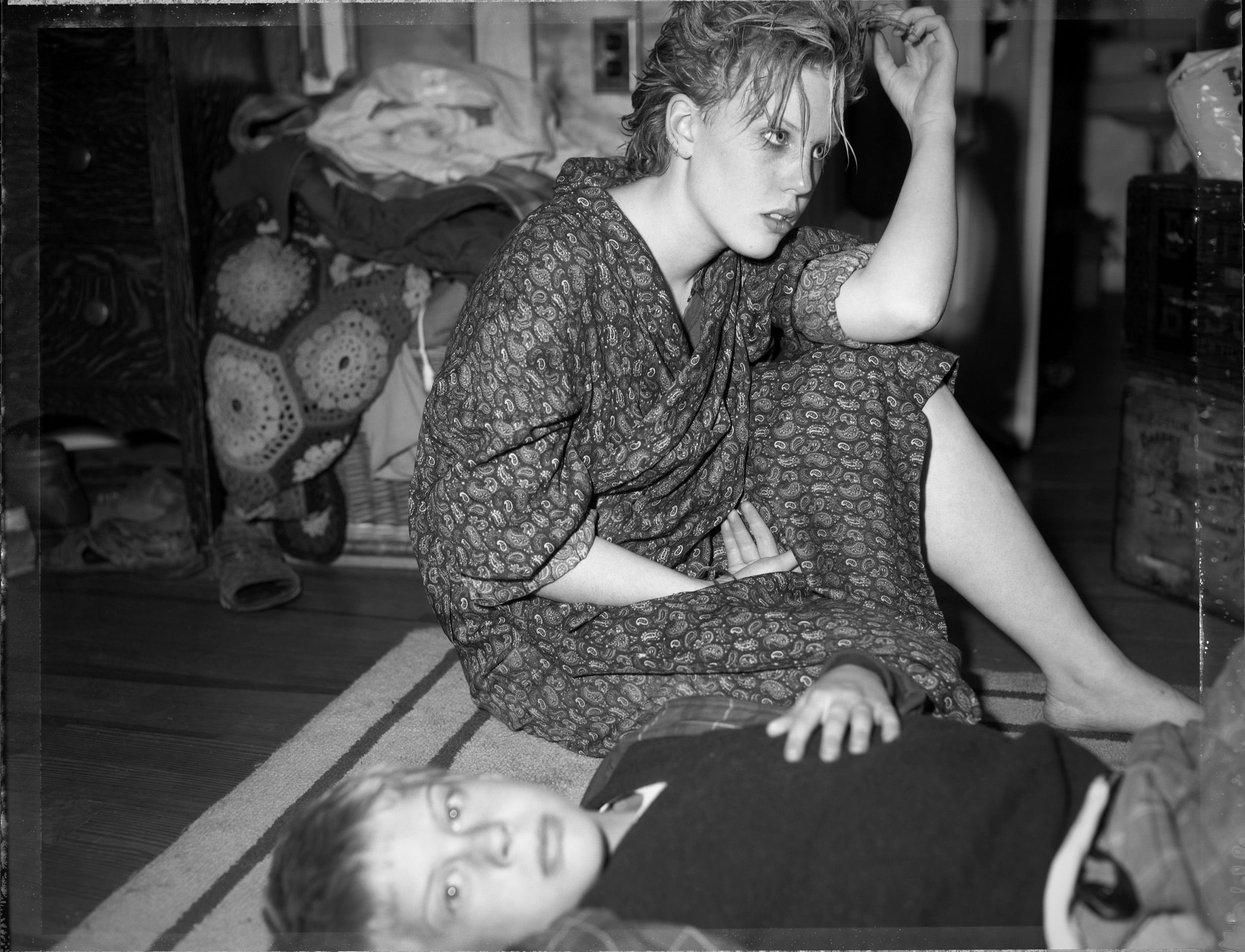Intimate shots of life in ’80s Massachusetts
- Text by Miss Rosen
- Photography by Judith Black

In 1979, Judith Black enrolled in the Creative Photography Lab at MIT to pursue her MFA in photography. A single mother of four living on limited means, Black moved her brood into a dilapidated apartment into Cambridgeport, Massachusetts: a multi-ethnic working-class neighbourhood that had been part of the industrial, port area of the Charles River just 15 minutes from the school.
“It was a very hard time in my life,” Black remembers. “We were lucky to find the apartment and to be able to afford it. It was then that I realised how the chance of birth gives one privilege… or denies it.”
Amid the relentless demands of being a working mother and student, Black turned to photography to create a space to record the lives of her loved ones long before family-based work was taken seriously by the art world. “It was seen as too ‘confessional,” Black says.


But these judgments did not deter Black from pursuing her dream, a story that unfolds with sensitivity and grace in the new book, Pleasant Street (Stanley/Barker). Here, we see Black’s young children Laura, Johanna, Erik and Dylan in a series of intimate portraits capturing moments of life that might otherwise go unnoticed.
Black saw beauty and grace in the simplicity of daily life. It was an understanding gleaned from her studies of Julia Margaret Cameron, Gertrude Kasebier, Imogen Cunningham and Elsa Dorfman: women who were both mothers and working photographers.
“Having my home be my studio meant everything,” says Black. “The kids were collaborators in that they knew what the pictures would be used for public display. We didn’t talk about it much – we just did it. I started making the self-portraits as a therapeutic exercise. Including the children and [my partner] Rob was an extension of that exercise. We were all in it together.”


Black applied the lessons she received from professors such as Robert Frank and Lee Friedlander to her personal work, both of whom offered one shared piece of advice: “Don’t think about it too much, just keep working.”
Black describes Frank as “gentle, honest but not cutting, and encouraging”, taking his mission to heart. “Frank’s assignment was to ‘make a photographic statement about where you are with photography, all about who you are and where you’ve been and how you feel.”
Her photographs became a visual diary and a family album, a series of images that speak to the necessity of making work for one’s self rather than for the art market.
“Today, I see that the larger culture has totally accepted ‘personal’ work as a legitimate genre that has universal appeal. Family is a very rich vein of emotional inquiry. I watch us grow up and grow old. We probably have differing memories attached to the photos, but there is some truth in each one. I think that is the important part.”





Pleasant Street is available now on Stanley/Barker.
Follow Miss Rosen on Twitter.
Enjoyed this article? Like Huck on Facebook or follow us on Twitter.
You might like

Largest-Ever Display of UK AIDS Memorial Quilt Opens at Tate Modern
Grief Made Visible — Comprising hundreds of panels made by lovers, friends and chosen family, the UK AIDS Memorial Quilt returns in full for the first time since 1994 – a testament to grief, friendship and the ongoing fight against HIV stigma.
Written by: Ella Glossop

Green Day’s Billie Joe Armstrong tells ICE to “fuck off” in LA protest video
Saviors — The singer shared the post on Sunday, featuring the band’s recently released song ‘Fuck Off’ as its soundtrack.
Written by: Isaac Muk

Yaya Bey: “Capitalism is exploitation, period”
do it afraid — Ahead of the release of her second 18-track odyssey in just over a single year, we caught up with the prolific singer, discussing the pitfalls of the music industry, European ‘voyeurism’ framing her previous album and breaking narratives set upon her by others.
Written by: Isaac Muk

In Medellín’s alleys and side streets, football’s founding spirit shines
Street Spirit — Granted two weeks of unfettered access, photographer Tom Ringsby captures the warmth and DIY essence of the Colombian city’s grassroots street football scene.
Written by: Isaac Muk

A new book explores Tupac’s revolutionary politics and activism
Words For My Comrades — Penned by Dean Van Nguyen, the cultural history encompasses interviews with those who knew the rapper well, while exploring his parents’ anti-capitalist influence.
Written by: Isaac Muk

We are all Mia Khalifa
How humour, therapy and community help Huck's latest cover star control her narrative.
Written by: Alya Mooro

